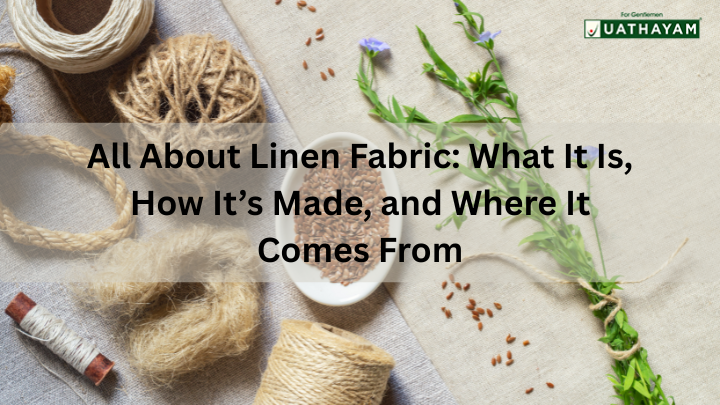Dhotis - A Complete Overview
Dhoti is an Indian traditional attire for men. It is often misinterpreted with Lungi but both are very different wears. The style and attitude bears by the dhoti changes from state to state in India. It is seen as indispensable in various functions and proceedings. It has many regional names in different Indian states like Veshti in Tamil Nadu, Mundu in Kerala, Dhotar in Maharashtra, Laacha in Punjabi, and Mardaani in Uttar Pradesh and Bihar.
Origin & History
The word ‘dhoti’ originated from the Sanskrit word 'Dhauta'. Dhoti is also marked as the traditional wear by several leading Indian politicians across the Indian subcontinent. It was and continues to be a part of the traditional attire in several countries like Srilanka, Bangladesh, and the Maldives. In earlier days, it was worn only with a kurta. The dhoti is also considered an attire that commands respect and dignity.
Style
Dhoti is available in an off white or cream color. The fabric material used in dhoti can either be cotton or silk. In most southern regions, it is mostly made with a border of golden strip. This makes it appear richer and more sophisticated. In most cases, 5 yards long strips of cloth is used to make this garment. Approximately five knots are used to wrap this garment. The wearing styles differ from region to region. In other parts of India, it is mostly worn in a pant style and not in skirt style which southern region people love. A part of the dhoti is tucked behind so that it looks like a pant.
Influence over the Years
Over a while, people in India have been influenced by western wear and traditions. A lot of western culture has been imbibed by the people of India. This makes dhoti wear home wear. People don’t wear it much to the office or parties. It has become more like a traditional wear.
That being said, one cannot ignore the fact that it has evolved its style as well. Of course, people across India still believe that dhoti, when folded to knee length, shows disrespect. So, they do not fold it up to that extent. Also, its availability in various colors is because of global influence and appeal.
Innovation
Dhoti has passed through a lot of innovation. As a traditional wear, it is still dominant in various circles of society, however, several improvisations and westernization has given the world, dhoti pants that have the structure of dhoti combined with western pants. This beautiful innovation is completely unisex. One can see the brilliance of design and tasteful colors combined to bring out the essence of these pants. This innovation has become a blockbuster, particularly within the youths.
Occasion
Normally, dhotis are worn during a festival or a marriage ceremony. To be precise, in most south Indian weddings, dhoti is an integral part of men’s wear. Almost every politician wears dhoti as if it is their professional wear. Pandits and those who adorn the temples wear dhotis as their regular wear. In most rural and urban regions, males enjoy the relaxation offered by dhoti in the comforts of their home.
Suitability
This clothing suits for almost all seasons. The reason is they are available in both silk and cotton. The silk varieties are embraced in the traditional customs and marriages, while the cotton ones are worn as daily wear.
Global Influence
It has influenced global culture in many ways. People across the globe are wearing the traditional dhoti in the pant style and thus, have made it a modern-day style statement even to the westerners.
Accessorizing
Along with dhoti, men wear a kurta or shirt. During ceremonies, they carry a cloth called angavastra to cover their upper body. In the case of farmers, a towel replaces angavastra. Women can pair pearl necklaces or beads along with the dhoti pants, adding to the inherent charm of the outfit.





